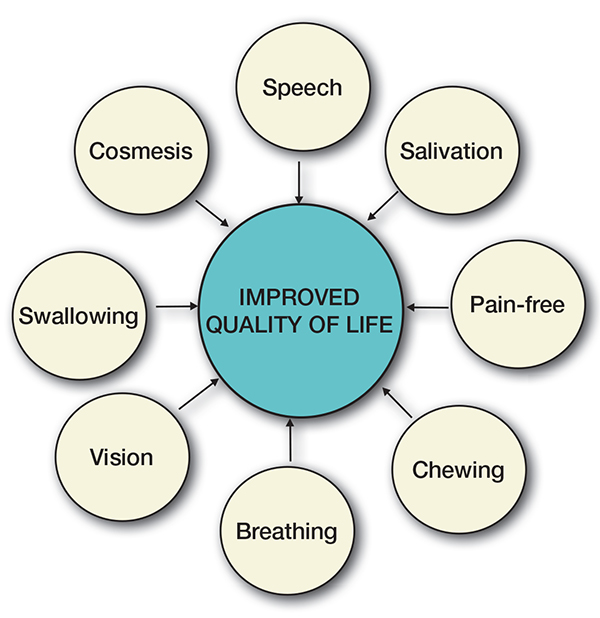The treatment of cancer of head and neck involves organs that perform important functions like speech, swallowing, deglutition and cosmesis.
Types of cancer where function preservation has made a major impact are:
Cancer of Larynx and HP:
The treatment for cancer of larynx and hypopharynx has an impact on important functions like speech, swallowing and breathing. Now we have various organ and function preserving options available for these patients.
Early Stage Laryngeal and HP Cancers (T1-2, N0, M0):
TABLE 1: Function Preserving Strategies for Early Stage Laryngeal and HP Cancer (T1-2, N0,M0)
- Radiotherapy
Advantages – Avoids surgery and provides best voice quality Disadvantages – Prolonged treatment with some side-effects - Trans-Oral Endoscopic Surgery
Advantages – One-time procedure with voice quality better than open surgery Disadvantages – Special expertise required and early voice quality inferior to radiotherapy - Open Partial Laryngectomy
Options are Vertical Partial Laryngectomy, Supraglottic Laryngectomy or Supracricoid Laryngectomy depending on epicenter of tumour
There are three function-preserving treatment options
- Radical Radiotherapy
- Trans-Oral Endoscopic Surgery
- Open Partial Laryngectomy
In the early stages of the cancer, the cure rates are excellent (control rates 90 per cent in glottic cancers and 80 per cent in supraglottic cancers) for all the modalities. The choice of treatment, therefore, depends on other factors (Table 1).
TABLE 2: Function Preserving Strategies for Locally Advanced Laryngeal and HP Cancer (T2-4, N0-3, M0)
Concurrent chemo-radiotherapy (85 per cent organ preservation) Radiotherapy with EGFR inhibitors (targeted therapy): comparable organ preservation rates to chemo-radiation, with low systemic toxicity Neo-adjuvant chemotherapy followed by chemo-radiotherapy in responders Total laryngectomy: >90 per cent successful speech rehabilitation with tracheo-esophageal prosthesis

Use of Micro-laryngoscopy with CO2 lasers has revolutionised Trans-Oral surgery. Long-term voice quality with lasers is shown to be as good as radiotherapy. Quality of voice depends on the depth of resection. If thyro-arytenoid muscle fi bers can be preserved without compromising oncologic safety, excellent voice results can be achieved.
Locally Advanced Cancer of Larynx and HP (T2-4, N0-3, M0):
In the past, these types of cancer were treated either with total laryngectomy or radiotherapy, though with poor organ preservation rates of < 60 per cent. Now we have various organ and / or function preservation strategies available (Table 2).
Oral Cancer:
Continuity of mandible is not only important for cosmetic reasons, it is also an essential functional unit for mastication, deglutition and speech. Organ and function preserving strategies in oral cancer are mainly to maintain the continuity of mandible and reconstruct oral structures resected during surgery. Use of Marginal Mandibulectomy without compromising oncologic safety helps us maintain mandibular continuity. The use of micro-vascular reconstruction has revolutionised the concept of function preservation in oral cancer.
In conclusion, with the advent of newer techniques and better understanding of tumour biology, we can now implement organ and function preservation policies in majority of our patients.
 Back to Site
Back to Site